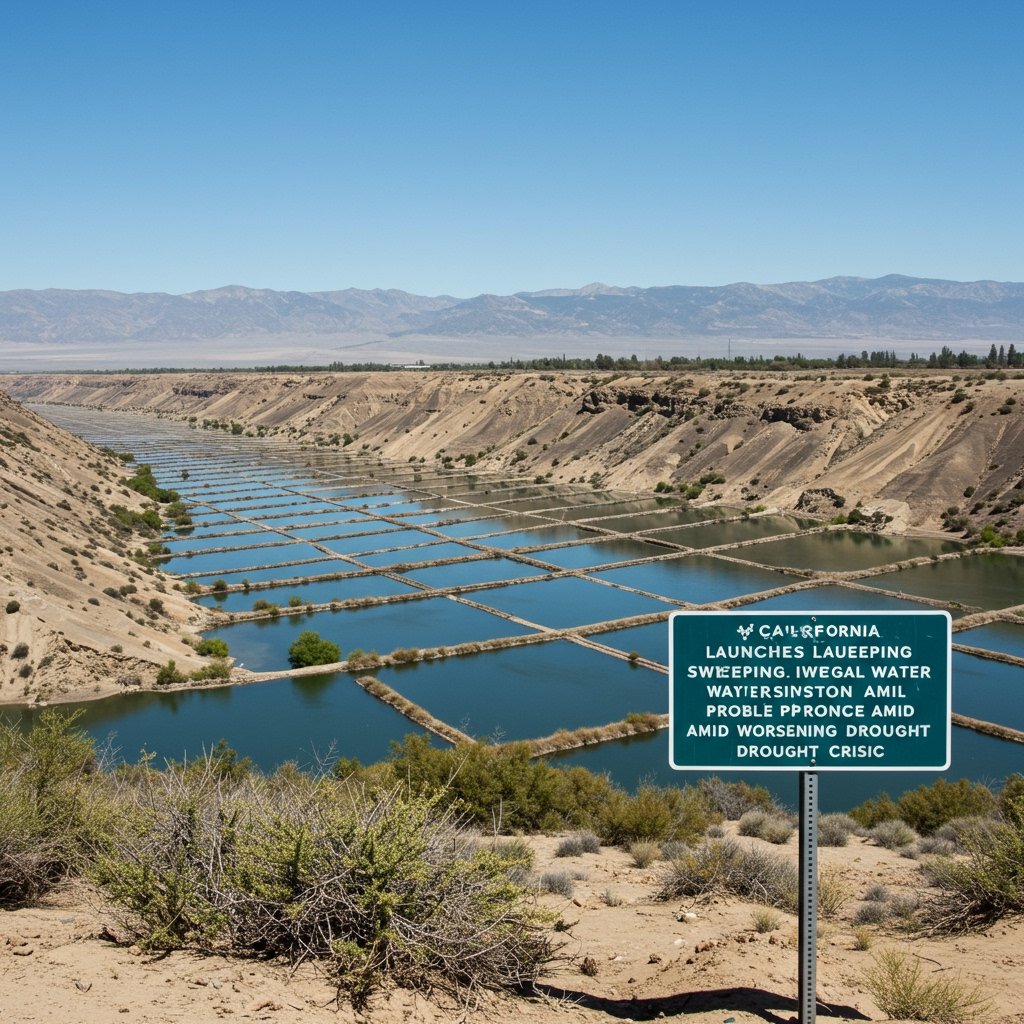State Water Board Initiates Major Illegal Diversion Investigation
SACRAMENTO, CA – On May 15, 2025, the California State Water Resources Control Board (SWRCB) announced the commencement of a significant investigation targeting numerous entities suspected of engaging in illegal water diversions across the Central Valley. This decisive action comes as California navigates its fifth consecutive year of deepening drought conditions, placing unprecedented strain on the state’s limited water resources. The probe is specifically focused on allegations of unauthorized water diversions that are detrimentally impacting sensitive aquatic ecosystems and significantly reducing flows in crucial river systems, including the iconic Sacramento River and the vital San Joaquin River.
Officials from the SWRCB indicated that the impetus for this large-scale investigation stemmed from a marked increase in public complaints coupled with sophisticated aerial surveillance and data analysis. These methods have revealed patterns of water usage that appear inconsistent with permitted water rights or lack proper authorization entirely. The Board emphasized that illegal diversions exacerbate the effects of the severe drought, depriving legal water users – including municipalities, agriculture, and environmental flows required for fish and wildlife – of critically needed water.
Scope and Triggers of the Investigation
The Central Valley, a vast and agriculturally productive region, is the primary geographic focus of this extensive investigation. The area relies heavily on surface water diversions from the Sacramento and San Joaquin river systems and their tributaries. The sheer number of potential diverters and the complexity of water rights in the region make monitoring and enforcement a perpetual challenge. The SWRCB’s current effort is described as one of the most comprehensive probes into unauthorized diversions undertaken in recent history.
The increase in complaints received by the Board signaled potential widespread non-compliance, a situation likely driven by the intense competition for scarce water supplies during the prolonged drought. Complementary to citizen reporting, the SWRCB has increasingly utilized advanced technologies, including satellite imagery, drone surveillance, and remote sensing data, to identify suspicious patterns of water use, reservoir filling, or changes in land use that may indicate unpermitted diversions. This technological approach allows the Board to cover large areas efficiently and gather evidence remotely before conducting on-the-ground inspections.
Potential Consequences for Violators
The State Water Board possesses broad authority under California’s Water Code to investigate and prosecute illegal water use. Entities found to have engaged in unauthorized diversions could face substantial financial penalties. California Water Code provisions allow for significant fines for unauthorized diversions, with daily penalties escalating the longer the illegal activity persists. These fines are intended to deter illegal activity and recover costs associated with enforcement and the environmental damage caused by the diversions.
Beyond monetary penalties, the SWRCB has the power to issue cease-and-desist orders, compelling violators to immediately halt their illegal diversions. Failure to comply with such orders can result in even higher penalties and potential legal action to enforce the orders through the courts. The Board stressed that enforcement actions would be pursued rigorously to ensure compliance and protect the integrity of the state’s water rights system, especially during a period of acute scarcity.
Drought Context and Environmental Impact
California’s fifth consecutive year of drought has pushed many reservoirs to historically low levels and significantly reduced natural river flows. The state’s intricate system of water rights, based largely on seniority, means that during dry periods, junior rights holders are curtailed, and even senior rights holders may face restrictions to protect minimum health and safety needs or environmental flows.
Illegal diversions undermine this system, taking water that is legally allocated to others or is necessary for maintaining critical environmental functions. Reduced flows in rivers like the Sacramento and San Joaquin have severe consequences for endangered fish species, such as salmon, which rely on specific flow levels and water temperatures for migration and spawning. They also impact riparian habitats, water quality, and the availability of water for downstream legal users, including large agricultural operations and major urban centers.
Preserving Limited Resources
The SWRCB’s investigation is deemed critical to preserving the state’s limited and dwindling water resources for essential uses. Essential uses prioritized during a drought typically include minimum human health and safety needs, firefighting, and maintaining core environmental flows necessary to prevent irreversible ecological damage. Every gallon illegally diverted is a gallon not available for these crucial purposes or for legal users who are adhering to strict curtailment orders.
The Board’s action signals a heightened commitment to enforcing water laws during this period of crisis. It serves as a stark warning to potential violators that monitoring and enforcement efforts are being intensified. The outcome of this investigation could lead to significant legal actions against those found to be in violation, underscoring the state’s determination to protect its precious water supplies amidst one of the most challenging drought periods in recent history. The investigation is ongoing, and the SWRCB stated it would provide updates as findings are confirmed and enforcement actions are initiated.



















